Mount Kilimanjaro’s extreme altitude is the primary hurdle for reaching the summit. If you acclimatize well, then there’s a high probability that you will be successful in getting to the top.
So how does one prepare for Kilimanjaro’s high altitude?
Genetics and Acclimatization
The ability to acclimatize to altitude is largely genetic.
Some people are simply born with a greater ability to function at altitude. As the Kilimanjaro climbing success rates show, some people can climb Kilimanjaro in as little as 5 days (not recommended), while some still fail with 8 days. It is impossible to tell how well a prospective climber may fare in an oxygen deprived atmosphere until he or she is actually in it.
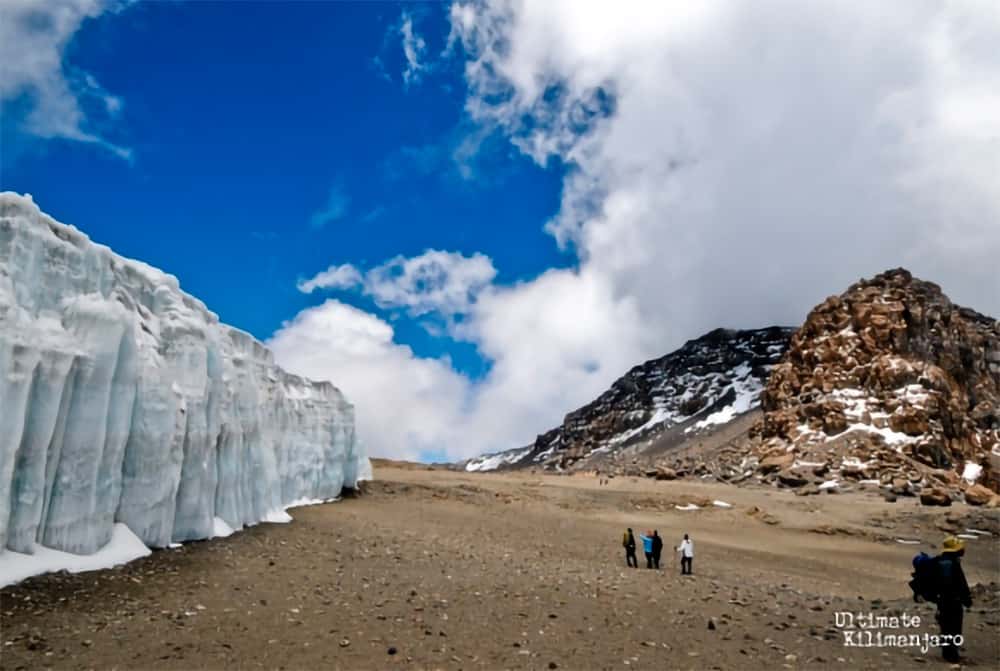
That being said, acclimatization is not 100% genetic, so there are things you can do to improve your performance at altitude.
Acclimatization Guidelines on Kilimanjaro
The following guidelines are recommended to achieving acclimatization while on the mountain:
- Ascend Slowly. Your guides will tell you, “Pole, pole” (slowly, slowly) throughout your climb. Because it takes time to acclimatize, your elevation gain should be slow and gradual. Taking rest days will help. Statistically, each additional day spent on the mountain generally increases your chances of getting to the top by about 20%.
- Do not overexert yourself. Mild exercise may help altitude acclimatization, but strenuous activity may promote altitude sickness. It’s important to be properly trained for the route you intend to climb so that you are not exhausted at the end of each day.
- Climb high, sleep low. Climb to a higher altitude during the day, then sleep at a lower altitude at night. Most of our Kilimanjaro routes comply with this principle and additional acclimatization hikes can be incorporated into your itinerary.
- Eat enough food and drink enough water while on your climb. It is recommended that you drink from four to five liters of fluid per day. Also, eat a high calorie diet while at altitude, even if your appetite is diminished.
- Use FDA approved drug Diamox for prevention and treatment of Acute Mountain Sickness (AMS).
- Avoid tobacco, alcohol and other depressant drugs including barbiturates, tranquillizers, sleeping pills, and opiates. These further decrease the respiratory drive during sleep, resulting in a worsening of altitude sickness.
- If you begin to show symptoms of moderate altitude sickness, don’t go higher until symptoms decrease. If symptoms get worse, descend.
You can also prepare for high altitude before you arrive in Tanzania.
Make Physical Training Your Priority
The number one thing you should do to prepare for Kilimanjaro’s altitude is to be in the best physical shape possible for your climb.
Focus on your training, first and foremost, before thinking about what else to do to mitigate the effects of altitude. By being in excellent fitness, the rigors of hiking and recovery over consecutive days will cause less stress on your body. Then, the body can focus most of its energy towards acclimatization. In other words, your body has limited resources. The more resources it can utilize for acclimatization, the easier the process will be.
When you are not fit, the wear and tear from hiking and camping, dealing with the weather and altitude, and everything else may be too much for your body to deal with all at once, which makes acclimatization harder.
Stay at Higher Altitude
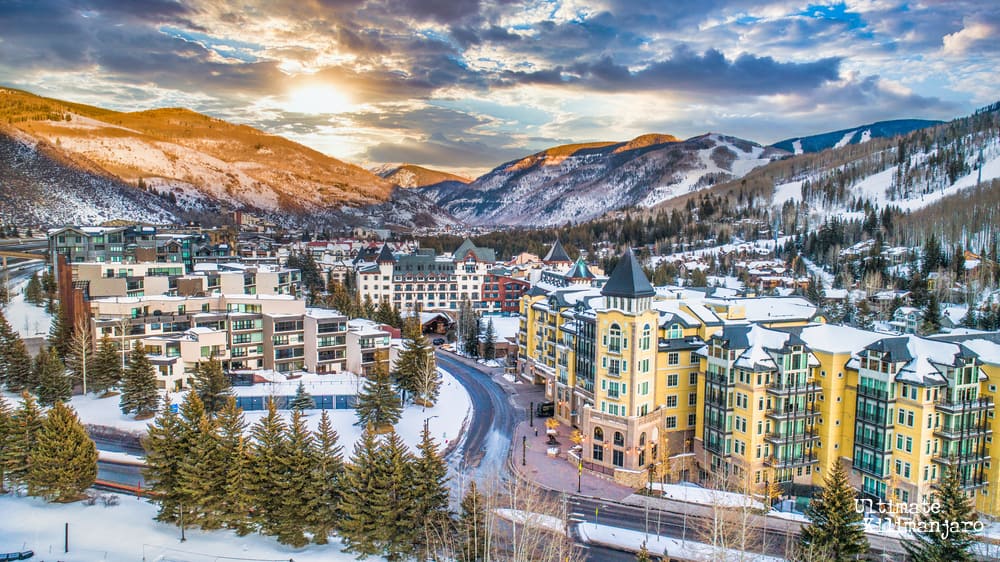
If you live in a high altitude town, you are fortunate.
You already have a base of acclimatization for the elevation you reside. To add on top of it, you can regularly hike to even higher places. This schedule can get your body familiar with lower oxygen levels and would be excellent for building long-term acclimatization for Kilimanjaro.
But for the rest of us who live at or near sea level, you may need to travel for high altitude exposure. Note that a short stay at high elevation would probably not directly improve your acclimatization for Kilimanjaro unless it is done immediately (within a few days) before your climb. But, it is still worth doing.
Having some experience at high altitude is better than having none. Therefore if you can visit a mountain town or elevated region while preparing for Kilimanjaro, we encourage it. The higher the altitude, the longer the stay, and the more active you are, the more you will learn about how you respond to a hypoxic environment.
Use Altitude Training Systems
Everyone can benefit from using an altitude training system to pre-acclimatize to high altitude. High altitude training systems enable climbers to pre-acclimatize at home, drastically improving the success rate, safety and enjoyment of the climb.
It works by reducing the percentage of oxygen in the air you breathe, simulating high altitude. This induces biological adaptations in the body to cope with the lower oxygen level. Besides going to (and staying in) high altitude places, using an altitude training system is the only way to pre-acclimatize before your trip.
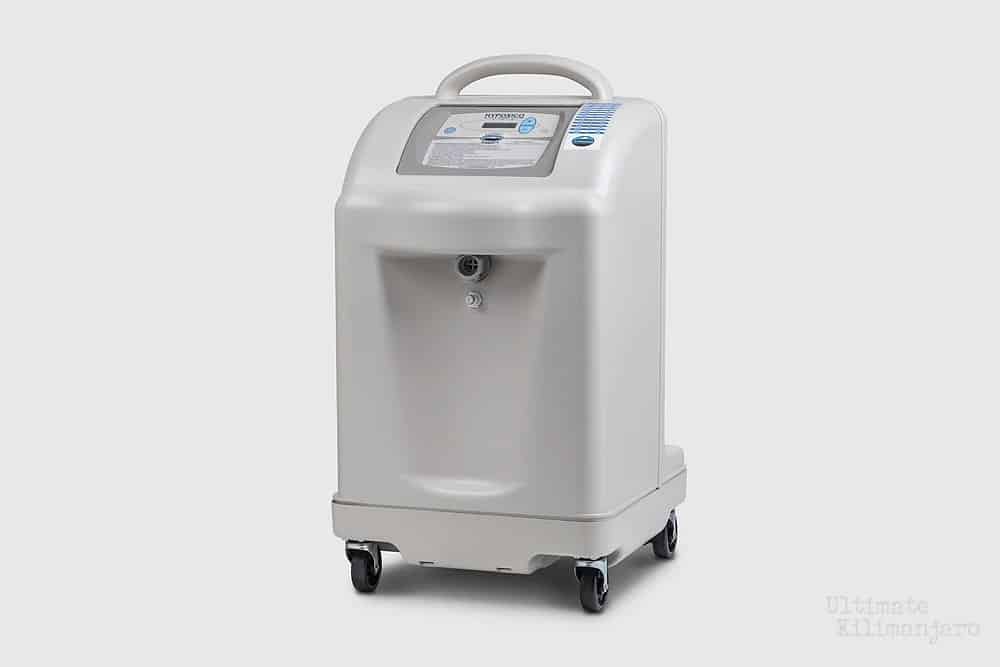
Without pre-acclimatization, as climbers ascend on Kilimanjaro, their bodies respond with short-term adaptations. These quick-response adaptations are meant primarily to prevent sickness and allow for some semblance of normal cardiovascular and muscular performance in an oxygen deprived environment.
Pre-acclimatization through altitude training systems produces long-term adaptations, such as an increase in red blood cells, blood volume, and efficiency of oxygen absorption.
These adaptations help:
- Reduce the Incidence of Acute Mountain Sickness. Acute Mountain Sickness (AMS) is the main reason climbers fail on Mount Kilimanjaro. Most people will experience some symptoms of AMS. Pre-acclimatization can reduce or eliminate symptoms of AMS.
- Increase performance on the mountain. Pre-acclimatization significantly improves the body’s mechanisms for delivering oxygen to the muscles. The result is increased aerobic and anaerobic performance on Kilimanjaro, such as hiking strength and endurance.
- Increase recovery on the mountain. Breathing rates and oxygen intake decreases when the body is asleep. In an oxygen deficient environment, many people have difficulty sleeping. Pre-acclimatization enables people to sleep well, and thus, recover after physical activity.
Hypoxico Altitude Systems
Hypoxico is the leading manufacturer of altitude training systems. Their altitude training systems allow climbers to pre-acclimatize in the comfort of their own home.
The system can be used either during sleep, during rest, or during exercise.
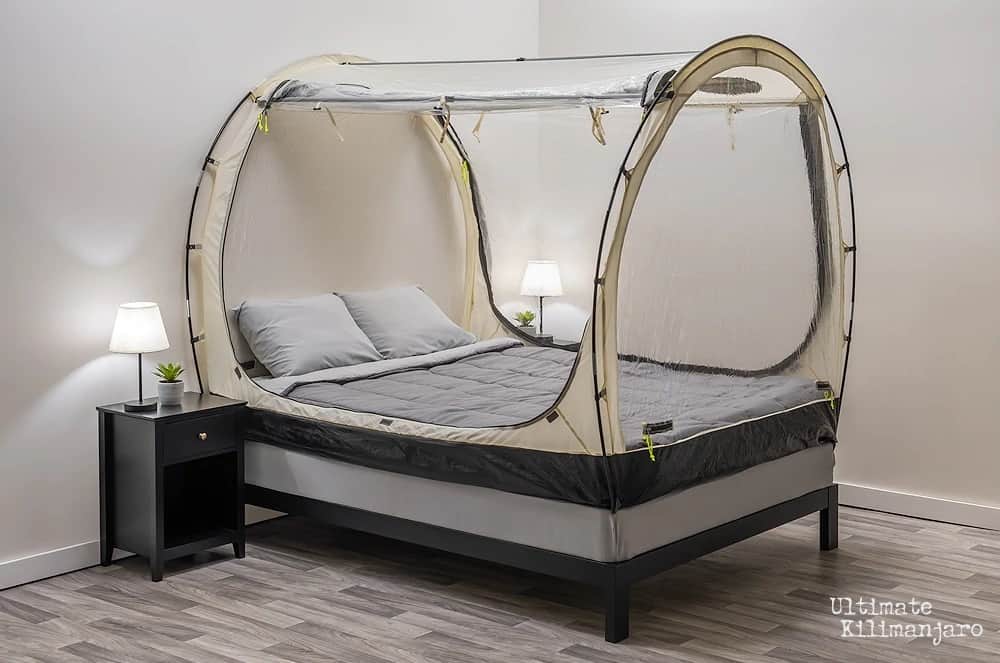
The most effective training method is pre-acclimatize while sleeping. Climbers simply sleep inside the tent overnight. Zippered doors are on both sides of the tent for easy entry and exit. Note that the enclosure is not air tight and is not intended to be. The generator pushes air with reduced oxygen content into the tent, forcing the normal oxygenated air out of the tent.
We recommend sleeping overnight for 6-8 hours at a simulated altitude of 10,500 feet for 6-8 weeks for proper pre-acclimatization for Kilimanjaro.
Climbers can also pre-acclimatize while exercising by wearing an exercise mask during light workouts. To achieve benefits, it is enough to spend 30-40 minutes on a bike, elliptical or treadmill for 3-4 times a week.
We recommend exercising at a simulated altitude of 10,500 feet for 6-8 weeks for proper pre-acclimatization for Kilimanjaro. These sessions are not meant to replace normal workouts, but are in addition to regular workouts in your Kilimanjaro training program.
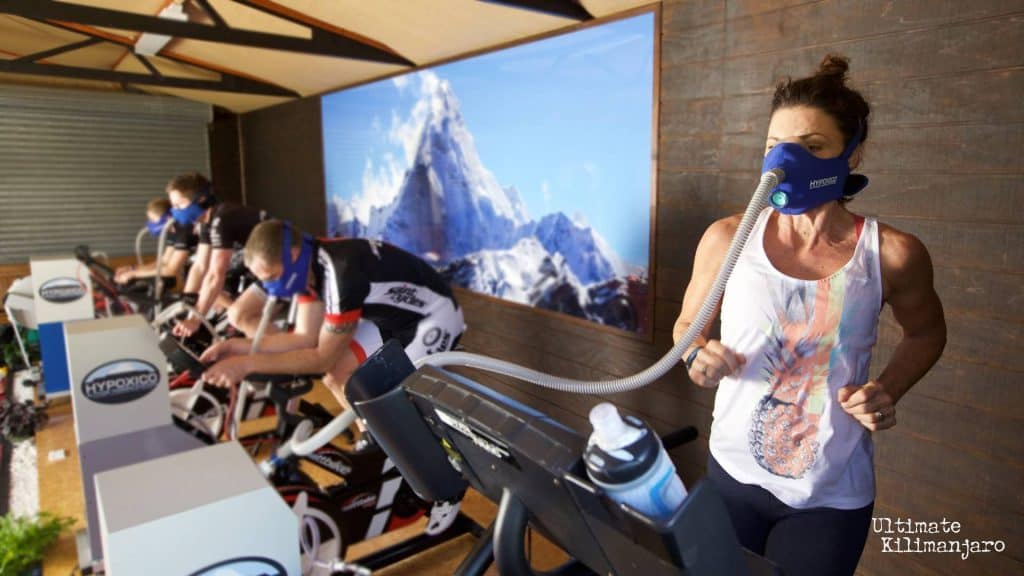
Finally, it is possible to pre-acclimatize while resting – such as while watching television, reading, or surfing the internet. Wearing the mask daily, for one hour a day, at high altitudes is required. We recommend wearing the mask at a simulated altitude of 20,000 feet for 6-8 weeks for proper pre-acclimatization for Kilimanjaro.
Each method is effective in attaining acclimatization prior to climbing Kilimanjaro. Climbers do not have to engage in more than one method, but using multiple methods will yield greater results. Hypoxico are experts in the field and will provide full instruction and support during your rental period.
Conclusion
In short, pre-acclimatization is very beneficial. It is like getting a head start, or lowering the mountain. In fact, nearly 100% of our clients who have used an altitude training system have successfully summited Kilimanjaro.
Realistically, we understand that unless you already live at altitude, pre-acclimatization is very inconvenient and/or expensive. Most of our clients do not make special plans to travel to high altitude or use an altitude training system, regardless of how helpful it may be.
So, if you can’t pre-acclimatize, don’t worry.
Our itineraries, especially those that are 8 days or more, are designed so that an average person can make it to the top without any prior high altitude exposure. Just put an honest effort into your training before you arrive and then follow our acclimatization guidelines while on the mountain.



















































